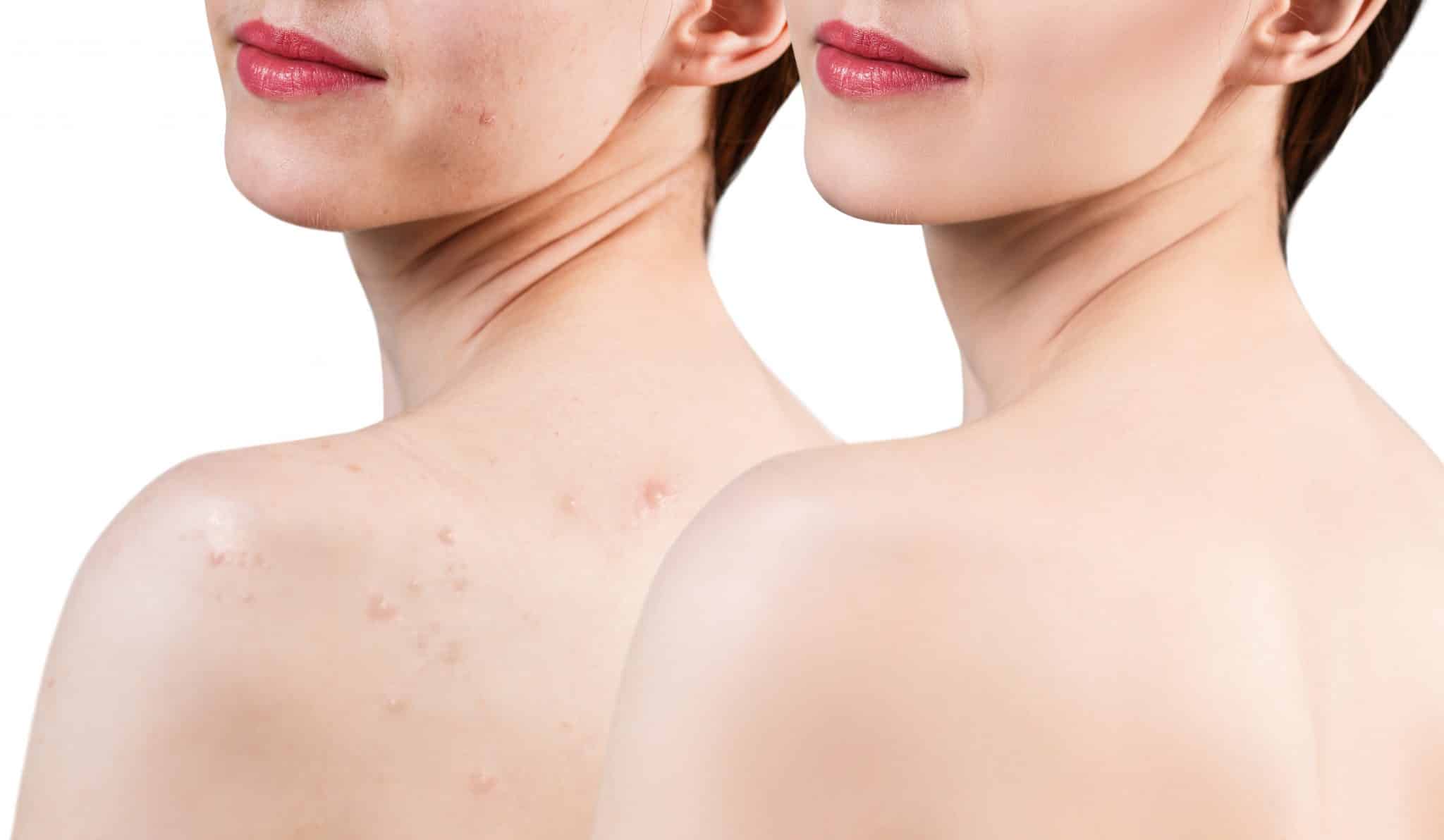Acne is a skin condition that occurs when hair follicles and pores are clogged with oil, dirt, and dead skin cells. While it most often occurs in teenagers and young adults, adults can also struggle with pimples or blackheads. Some acne occurs sporadically due to stress or a change in diet and can often be resolved with face wash and over-the-counter acne medications. However, some acne is more difficult to control and requires more rigorous treatment.
Back acne, also commonly referred to as “bacne,” is caused by an excess build-up of oils, bacterias, and dead skin cells. Although some people may experience occasional pimples or bumps on their back, some individuals develop severe back acne that can result in scarring. Common causes of body acne include stress, sweat, hormones, genetics, and medications.
How to get rid of back acne
1. Establish a better shower routine
Showering should be a daily routine, especially if you are prone to sweating or workout frequently. Cleansing your skin of oils and bacteria helps to reduce pimples and rebalance your skin’s natural appearance. Although your back is often difficult to reach, putting in the additional effort will ensure proper hygiene and decrease the likelihood of developing back acne.
2. Wear loose clothing
When trapped under clothing, particularly tighter clothing, moisture can worsen skin irritation and result in breakouts. Be sure to wear clothing that allows your skin to breathe and helps pull moisture from the skin rather than trap it. Frequently wearing clothes that are too tight can force oils or bacteria into your pores and irritate your hair follicles. Wash your clothes regularly, even if they don’t seem particularly sweaty or dirty.
3. Exfoliate
Exfoliating scrubs can help remove additional dirt and excess oils from the skin by penetrating pores and pulling irritants out. Additionally, an exfoliant can help to hydrate and calm inflamed skin. Using exfoliants with salicylic acid will further prevent breakouts.
4. Use select lotions and body washes
Somebody washes and cosmetic lotions contain pore-clogging ingredients that make it challenging to keep your skin clear. Use oil-free products that hydrate the skin while cleansing away unwanted bacterias. Consult with your dermatologist for recommendations on the best body washes for back acne.
5. Adopt an anti-acne diet
Foods that cause your body’s blood sugar to increase quickly can make acne worse. Eating a balanced diet that includes fruits and vegetables, lean proteins, and whole grains can positively impact your skin. Try avoiding high glycemic index foods, such as white bread, white potatoes, and white pasta and rice. Dairy and sugar can also impact the appearance of more blemishes.
6. Apply topical creams
Topical creams can address breakouts by adding a layer of treatment in addition to your regular cleaning routine. Over-the-counter acne medications that include benzoyl peroxide or salicylic acid may help clear up acne. When applying acne creams, be sure to treat the entire area and not just the spots. If you’re not sure which medication may be right for you, your dermatologist should be able to recommend a topical cream that will meet your needs.
How to get rid of acne scars
Scarring occurs when the skin is frequently irritated, or the underlying tissue is damaged. Therefore, it is not uncommon to develop acne scars after undergoing treatment for mild to severe acne. The most effective way to avoid acne scars is to minimize breakouts and refrain from picking, popping, or squeezing existing blackheads or pimples. However, should you still develop scars due to persistent acne, there are at-home and in-office treatment options that can help.
Over-the-counter products containing lactic acid, alpha hydroxy acid, retinol, and salicylic acid can help reduce the appearance of acne scars. Many of these are available as topical creams and spot treatments. Some of these products may make you more sensitive to sun exposure, so be sure to review product guidelines before incorporating them into your daily routine. Depending on the type of acne scar, a dermatologist may recommend certain products.
If at-home treatments do not work, you may be qualified for in-office procedures, including dermabrasion, chemical peels, fillers and injections, micro-needling, or laser resurfacing. Consulting with a dermatologist to determine whether acne scar treatment is right for you will help ensure the most effective treatment.
Consult with your dermatologist
Whether you are a pre-teen or an adult, acne can be frustrating. Limiting irritants such as tight, sweaty clothing and avoiding sugary foods may help reduce oil buildup and the appearance of blemishes. If you are still experiencing sudden breakouts and severe acne, speaking with a dermatologist can provide more effective solutions.

